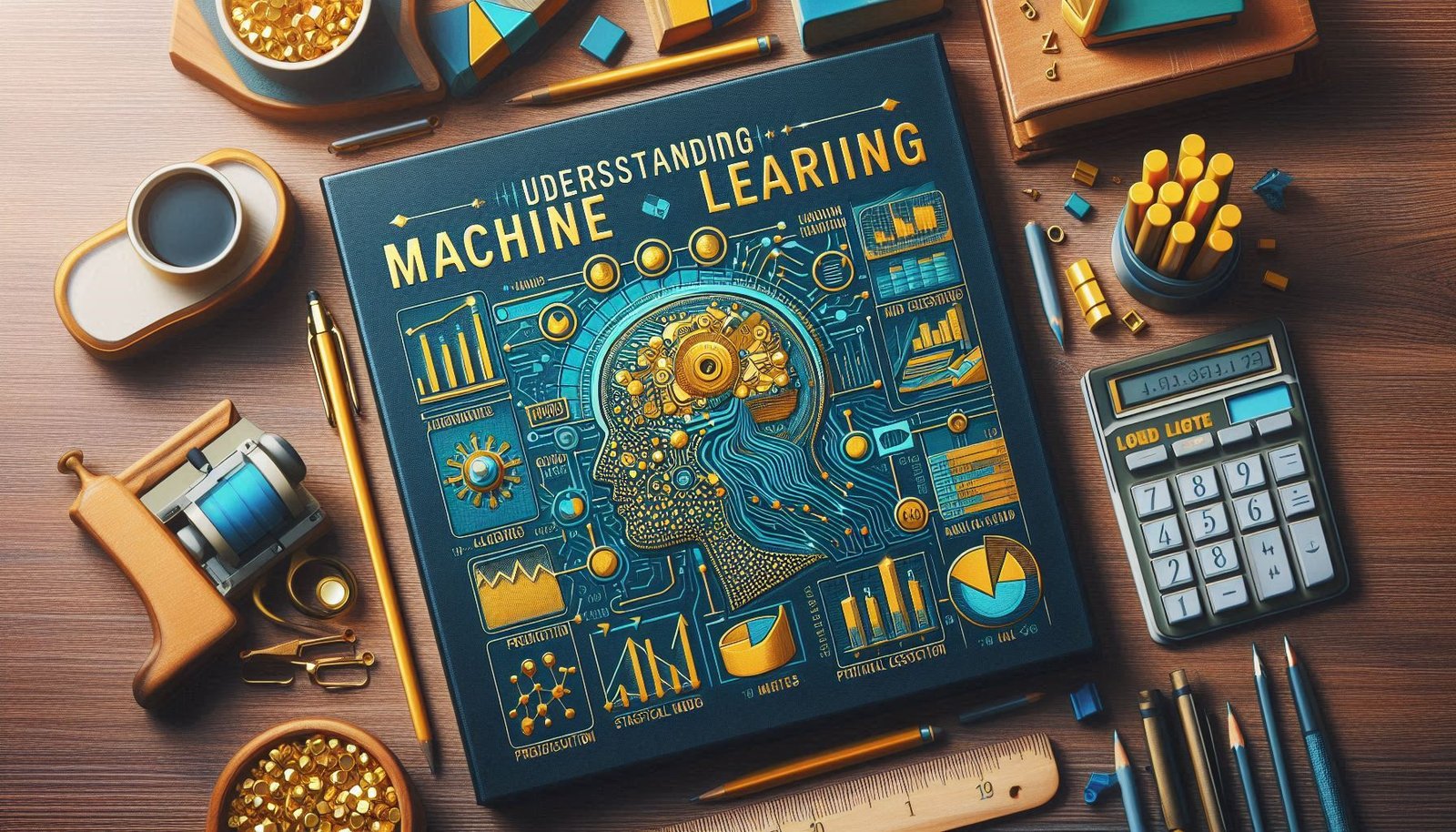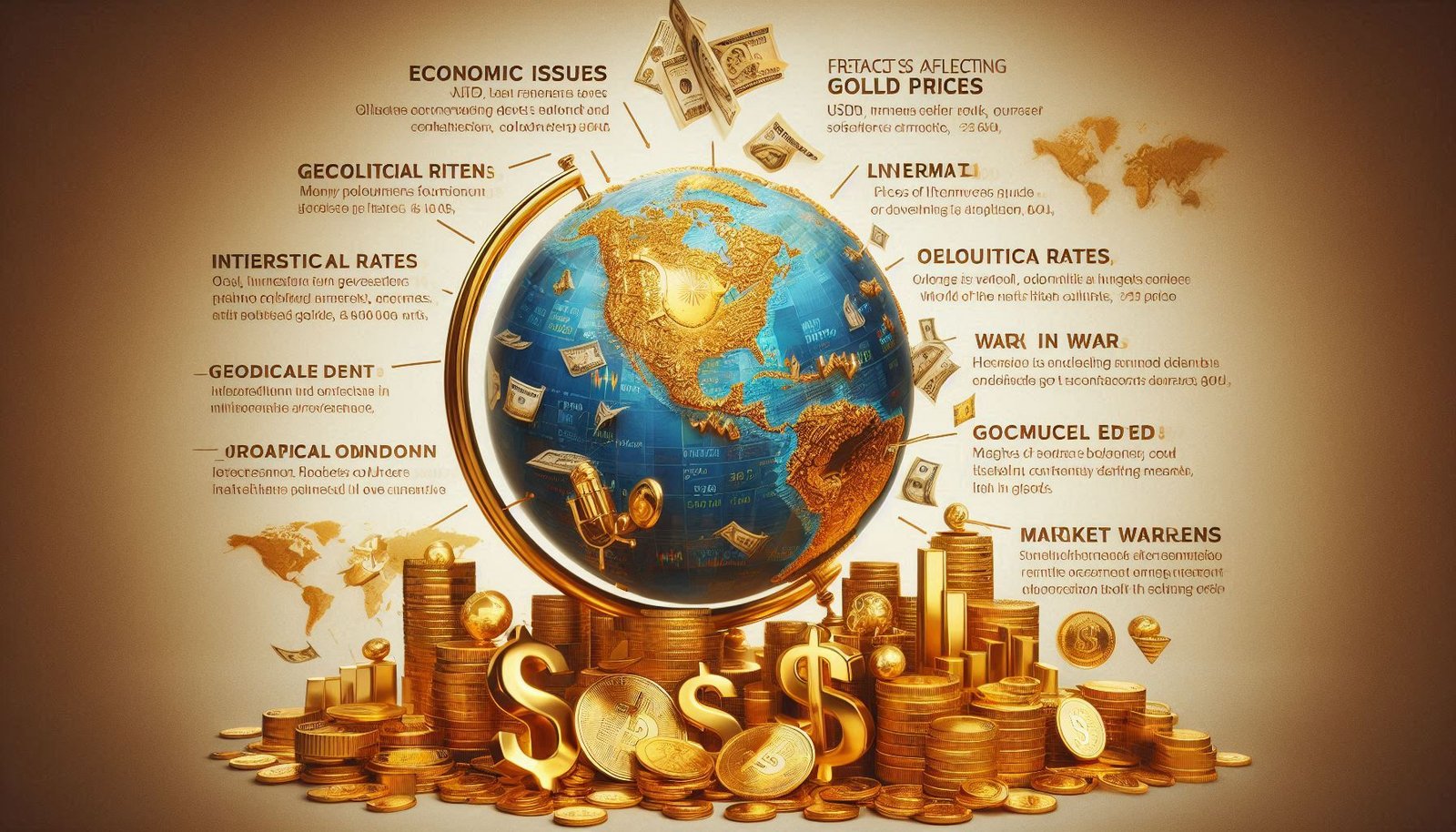Gold is considered, maybe justifiably to some extent, a safe haven investment whose value generally rises during uncertain economic periods. Predicting gold price correctly can be very rewarding for all investors, traders, or financial institutions who train on data till the end of October 2025. Traditional techniques used for gold price prediction, like fundamental analysis and technical analysis, are still quite popular, however, machine learning (ML) is becoming an effective tool used for forecasting price movements.

In this article, we’ll discuss how we can use Machine Learning to predict gold price and what the steps are and techniques used to enhance the accuracy of these predictions.
Table of Contents:
- Introduction
- Why Predict Gold Prices?
- Understanding Machine Learning
- Steps in Predicting Gold Prices Using Machine Learning
- Data Collection
- Data Preprocessing
- Model Selection
- Training the Model
- Model Evaluation
- Techniques Used in Predicting Gold Prices
- Linear Regression
- Decision Trees
- Neural Networks
- Random Forests
- Support Vector Machines (SVM)
- Factors Affecting Gold Prices
- Comparison of Traditional Methods vs. Machine Learning
- Challenges in Predicting Gold Prices
- FAQs
- Conclusion
1. Introduction
Gold price is driven by several factors such as inflation rates, currency changes, global political stability, and mechanics of supply-demand. As the investments, industries, and governments closely watch these price fluctuations, predicting gold price with greater accuracy becomes essential.
Machine learning has already been recognized as a potential instrument that could assist in this prediction. Machine learning algorithms are capable of predicting future behavior by observing interactions from historical data [1].

2. Why Predict Gold Prices?
Predicting gold prices provides many benefits:
- Investment and Trading Decisions: To make buy or sell decisions on gold at the right time, investors need accurate predictions.
- Risk Management: By predicting price movements, companies and investors can hedge against potential price volatility.
- Economic Analysis: Predicting prices allow governments and economist to make better decisions associated with
Gold rate future prediction:
-
Gold may be able to shine harder as a safe haven amid piling global inflationary pressures, sending its value higher in the coming years. Second, it is possible that geopolitical instability and even trade tensions cause more investors to turn to the relative safe haven of gold, with demand surging as a result. As the central banks continue with their accommodating stance, gold can act as a go-to asset and help push up its price. New tech applications from electronics to outer space could boost industrial use of gold and change its future value. The rise of gold-backed cryptocurrencies might create a fusion of traditional and digital assets, potentially elevating gold’s role in the financial landscape.

3. Understanding Machine Learning
It [such Algorithms, Statistical Models] is the making of the machine learning which is a type of artificial intelligence. It is a subdomain of artificial intelligence (AI) and is especially helpful for prediction, classification, and pattern recognition tasks.
Machine learning refers to a technique where we are expressing gold prices in terms of features using machine learning models which will take historical data about prices and several other variables that influence the price of gold.

Types of Machine Learning
- Supervised Learning: The model is trained on labeled data (past price data) to make predictions.
- Unsupervised Learning: The model helps to analyse the hidden pattern in data that does not have labels.
- Reinforcement Learning : The only thing the model knows is how it does over time, by being interactive with the environment and receiving feedback.

For predicting gold prices, supervised learning is most commonly used.
4. Steps in Predicting Gold Prices Using Machine Learning
Predicting gold prices using machine learning involves several key steps. Let’s break them down:(Predicting Gold Prices Using Machine Learning)
Data Collection
Data collection is the first step in any machine learning model building. For modeling the gold price, you would need past gold price data along with other external data that might influence gold prices like:
- Economic indicators (e.g., inflation rate, GDP)
- Interest rates
- Stock market performance
- Exchange rates on currencies (USD in particular)
- Geopolitical developments (wars, elections, etc.)
- Commodity market trends (ex: oil prices, mining data)
Data Preprocessing
This includes:
- Handling missing values: Missing data can lead to incorrect predictions.
- Normalization/Scaling: Since the data might have different units and ranges, normalization ensures that no feature dominates others.
- Feature Engineering: Create new features that can improve model performance. For instance, you could calculate moving averages of gold prices to capture trends.
Model Selection
We can use various machine learning algorithms to return gold prices. The correct model will be based on the characteristics of the data as well as the nature of the prediction task. Some of the commonly used algorithms are:
- Linear Regression
- Random Forest
- Support Vector Machines (SVM)
- Neural Networks
Training the Model
After the model is selected the you will train it on historical data. This model will learn how each of the factors(e.g., interest rates, inflation) works with respect to the gold pricing. In this step, algorithm fine-tunes parameters to reduce prediction errors.
Model Evaluation
After training the model, you need to evaluate its performance. You can do this by:
- Data splitting: Just like Im classifiers we split the data into training and testing. Dataset is divided into the training set and test set.
- Using metrics: Evaluate the model using evaluation metrics such as Mean Absolute Error (MAE), Mean Squared Error (MSE), or R-squared to determine how well the prediction model predicts gold prices.
5. Techniques Used in Predicting Gold Prices
Several machine learning techniques are commonly applied to gold price prediction. Let’s explore some of the most popular ones:
Linear Regression
Linear regression shows how one or more independent variables (like interest rates) impact the dependent variable (the gold price). It presupposes a linear relationship between inputs and outputs.
Pros:
- Simple to implement
- Fast to train
Cons:
- Limited to linear relationships
- May not capture complex patterns in data
Decision Trees
Decision trees break the data into different branches on features which is the tree like structure. Each decision point leads to a final prediction.
Pros:
- Easy to interpret
- Handles both numerical and categorical data
Cons:
- Prone to overfitting on noisy data
Neural Networks
Neural networks mirror the architecture of the human brain’s method of processing data. They consist of layers of interconnected nodes and can capture complex patterns in data.
Pros:
- Can model complex, nonlinear relationships
- Excellent for large datasets
Cons:
- Requires a lot of computational power
- Difficult to interpret
Random Forests
Ergo, A random forest is an ensemble method that builds multiple decision trees to achieve high accuracy. It works by averaging predictions from several trees.(Predicting Gold Prices Using Machine Learning)
Pros:
- Reduces overfitting compared to individual decision trees
- High accuracy
Cons:
- Slower to train and make predictions
- Less interpretable
Support Vector Machines (SVM)
Support vector machines (SVMs) are strong classifiers that attempt to establish a hyperplane that best divides the data points into categories.
Pros:
- Works well with high-dimensional data
- Effective in cases of non-linear separation
Cons:
- Not very interpretable
- Can be computationally expensive
6. Factors Affecting Gold Prices
Predicting gold prices is not just about looking at historical data. Many factors influence the price, and they must be considered:
- Economic Issues: Inflation, GDP, interest rates, health of significant economies
- Geopolitical Events: Political instability, wars and government policies.
- Market trends. Prices of other commodities, such as oil; stock market performance.
- Changes in Value of Other Currencies: Gold is typically quoted in USD, meaning that movements in dollar value can affect the price of gold.

7. Comparison of Traditional Methods vs. Machine Learning(Predicting Gold Prices Using Machine Learning)
| Criteria | Traditional Methods | Machine Learning |
|---|---|---|
| Accuracy | Dependent on analyst experience | Can provide more accurate predictions through data patterns |
| Data Dependency | Relies on manual analysis | Learns from large datasets automatically |
| Flexibility | Limited to certain parameters | Adapts to different factors and inputs |
| Speed | Time-consuming due to manual work | Faster due to automation and data-driven decisions |
| Interpretability | Easier to explain | Complex models may lack transparency |
8. Challenges in Predicting Gold Prices
Predicting gold prices with machine learning comes with its own set of challenges:
-
(7) Data Quality The predictions of the model can be impacted by incomplete or low-quality data.
Unpredictable Public Market Sensitivity: Geopolitical or market events that lead to sudden price shifts.
-
Overfitting: A model may work too well on historical data if it’s trained on it too specifically, but fail to generalize future trends.
9. FAQs
Q: Which ML algorithm is best for price prediction?
A: There is not a single “best” algorithm for price prediction; different algorithms work better in different scenarios. However, often used models for price prediction include Random Forests and Neural Networks as it has the capacity to learn from complex and non-linear relationships from large datasets effectively.
Q: How to predict the price of gold?
A:In part one, we scrape historical gold prices and preprocess the data in order to build a machine learning model to predict gold prices. Inflation rates, interest rates, and geopolitical events can also significantly influence gold price predictions.
Q: What is the best indicator of gold price?
A: The best indicators of gold prices include:
- USD Strength: Gold is typically quoted in USD, thus, the stronger the dollar, the lower gold goes.
- Inflation: Investors often turn to gold as a hedge against inflation.
- Interest Rates: Increasing interest rates can cause gold to be less favorable than other investments.
- Geopolitical Events: Wars and political instability or crises increase demand for gold.
Q: In which country is gold the cheapest?
A: Gold Prices by Country — Local Currency, Taxes, and Import Duties Here you may find cheaper prices of gold in countries that have lower gold production costs or where gold-mining activity exists — but these statistics are close to China, India and some African countries. It is important to note that gold prices in the international market are usually more or less the same, only differ in the local environment.
10. Conclusion
This has led to exploration of new tech approaches to make better prediction on gold prices with machine learning. Machine learning models can analyse large volumes of historical data, capturing patterns and trends that human analysts may not detect, but they rely heavily on the quality and depth of the data, and have limitations and challenges in modelling the gold market which can be heavily influenced by unpredictable global events. Still, machine learning is a great tool to use for those looking to learn how to make decisions about gold investments.
[…] world of cryptocurrency trading has overtaken the financial market. But a volatile market makes it important to use the latest […]
[…] this post, I will clarify the distinctions between Machine Learning Inference vs Prediction as they apply to the model training, in plain speak, with clear sub-headings, and, will make […]